
Keys Cambridge English for Engineering Teachers Notes
.pdf
UNIT 7 Procedures and precautions Teacher’s Notes
Background information and useful web links
Describing health and safety precautions (pages 54 and 55)
The main themes of this section are basic safety equipment, personal protective equipment (PPE) related to common industrial hazards, and hazard analysis – a term used to describe safety planning, where a given industrial operation is thought through carefully in advance, from a safety standpoint, in order to identify the potential dangers so that a safe system of work can be put in place. In industry, increasing emphasis is placed on safety planning at all stages of the development
process. This often requires engineers to design-in safety at conception stage, thinking about how the devices, installations and structures they design can be put together safely, at the stage when their designs are still on the drawing board.
Health and safety regulations for PPE http://www.hse.gov.uk/pubns/indg174.pdf
Emphasising the importance of precautions (pages 56 and 57)
This section focuses on the skill of emphasising and stressing the importance of safety precautions. The context focuses on precautions for electrical maintenance, although clearly the target phrases can be applied to any branch of engineering.
EHV live line maintenance http://fr.youtube.com/watch?v=Z3q9WdjD5wc
Helicopters in live-line work http://www.eurocopter.com/site/docs_wsw/fichiers_communs/docs/pa-54-22-01.pdf
Discussing regulations and standards (pages 58 and 59)
Regulations and standards are relevant to engineering in various domains. Examples are quality standards, design standards and codes of practice, and safety regulations.
Working with written instructions and notices (pages 60 and 61)
This section explores the main differences in style between spoken English and written notices and instructions. This is relevant to engineers and technicians as people who frequently need to read and understand notices and written instructions, and also as people who often write notes and instructions in abbreviated form on drawings and in specifications.
|
Cambridge English for Engineering |
Cambridge University Press 2008 |
|
|
91 |
Photocopiable |
|||
www.cambridge.org/elt/englishforengineering |
||||
|
|
|||
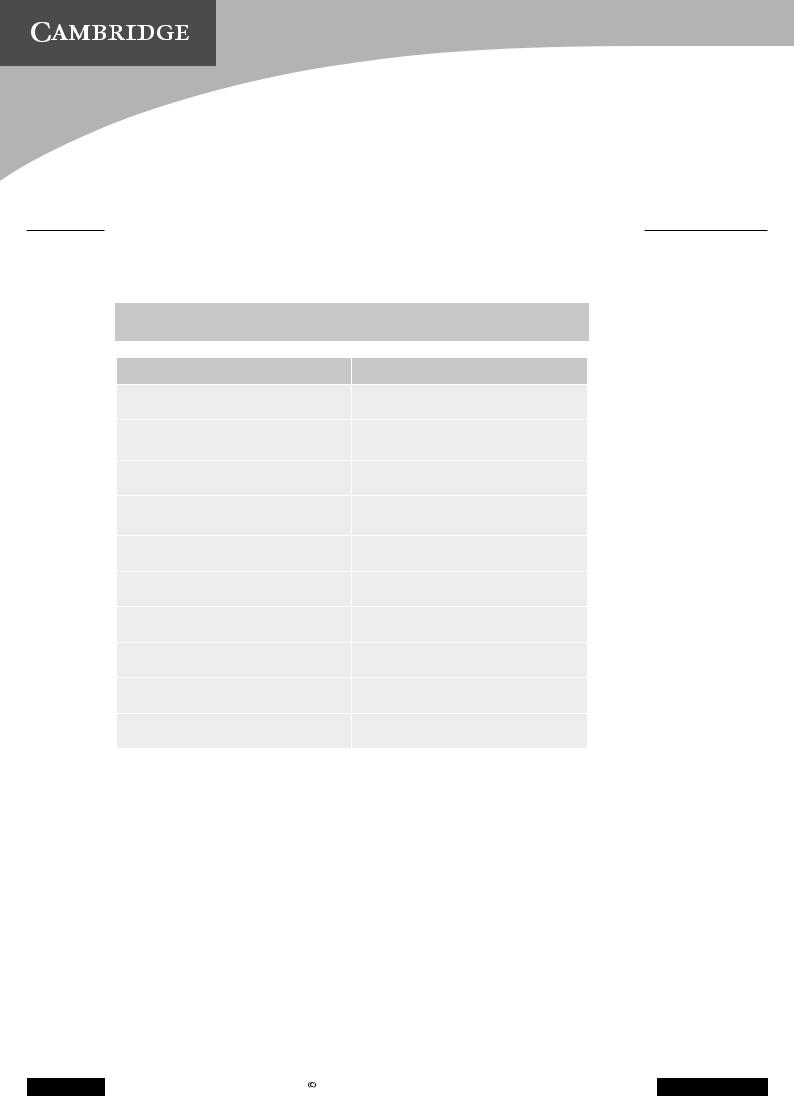
Professional English
Cambridge English for
Engineering
TEACHER’S NOTES
UNIT 7 Procedures and precautions
 Resource sheet 7a
Resource sheet 7a
Complete the table below with the types of Personal Protective Equipment.
dust mask ear plugs ear defenders gauntlets goggles overalls respirator safety boots/shoes safety harness welding mask
Item of Personal Protective Equipment |
Description |
1 ear plugs |
inserted in the ears to protect the hearing |
2 |
protect the hearing by covering the ears – can |
|
also be attached to the sides of a hardhat |
3 |
have steel toe caps and reinforced soles |
4 |
has dark glass to protect the eyes from bright |
|
flashes of light |
5 |
filters solid particles from the air |
6 |
gas mask – filters gas particles from the air |
7 |
prevents the wearer from falling |
8 |
another general term for safety glasses |
9 |
for covering the body, arms and legs |
10 |
long gloves which extend up the arms |
92 |
Cambridge English for Engineering |
Cambridge University Press 2008 |
Photocopiable |
|
www.cambridge.org/elt/englishforengineering |
||||
|
|
|||
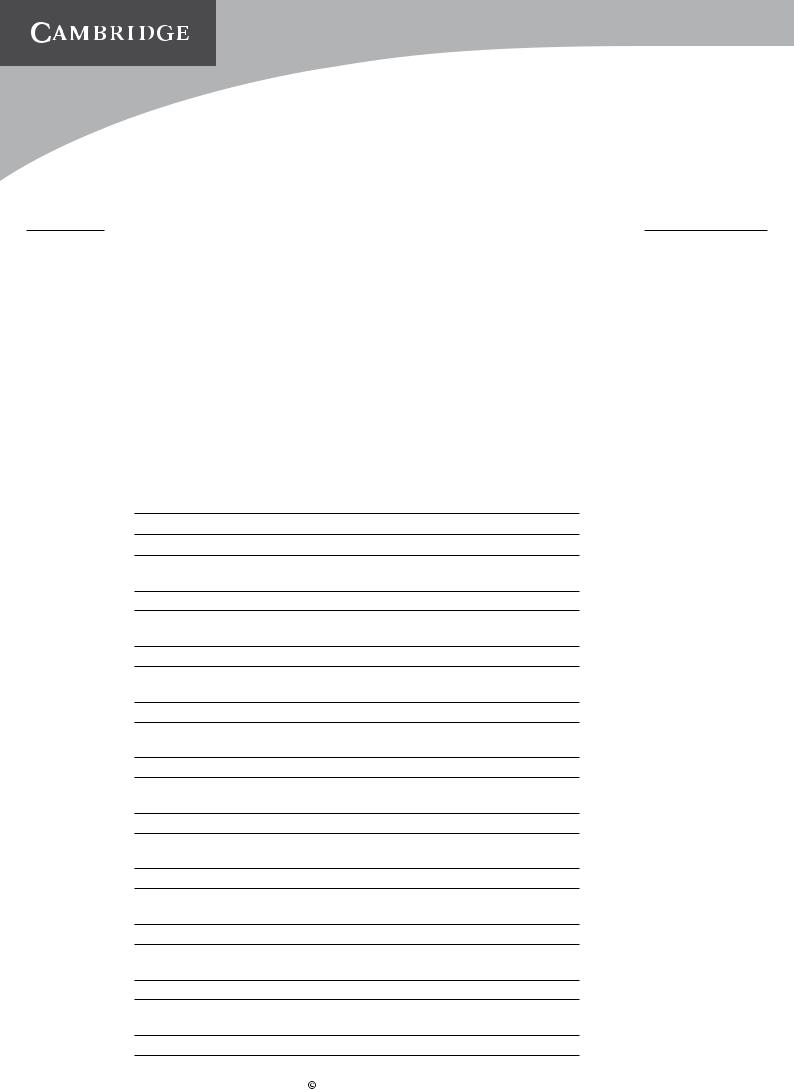
Professional English
Cambridge English for
Engineering
TEACHER’S NOTES
UNIT 7 Procedures and precautions
 Resource sheet 7b
Resource sheet 7b
Use the words in the box to write precautions that either should or don’t need to be taken by line workers.
|
advisable |
|
|
|
crucial |
|
|
It’s |
essential |
to |
... |
|
preferable |
not to |
|
|
vital |
|
|
There’s no |
need to |
... |
|
You don’t |
|
||
|
|
|
|
|
|
|
|
DOs and DON’Ts for line workers during high-voltage, live-line maintenance by helicopter:
1 ... touch only one conductor at a time.
It’s crucial/essential/vital to touch only one conductor at a time. If you
touched two conductors, it would result in a short circuit passing through
you, causing electrocution.
2... hold on to two conductors at the same time.
3... connect yourself to a pylon using a strong, steel cable.
4... switch off the current running through the power line.
5... work during dry weather.
6... work during wet weather.
7... wear a hot suit with metal threads in it.
8... wear a parachute.
9... anchor the cradle to the ground with a steel cable.
10 ... wear shoes with thick, rubber soles.
|
Cambridge English for Engineering |
Cambridge University Press 2008 |
|
|
93 |
Photocopiable |
|||
www.cambridge.org/elt/englishforengineering |
||||
|
|
|||
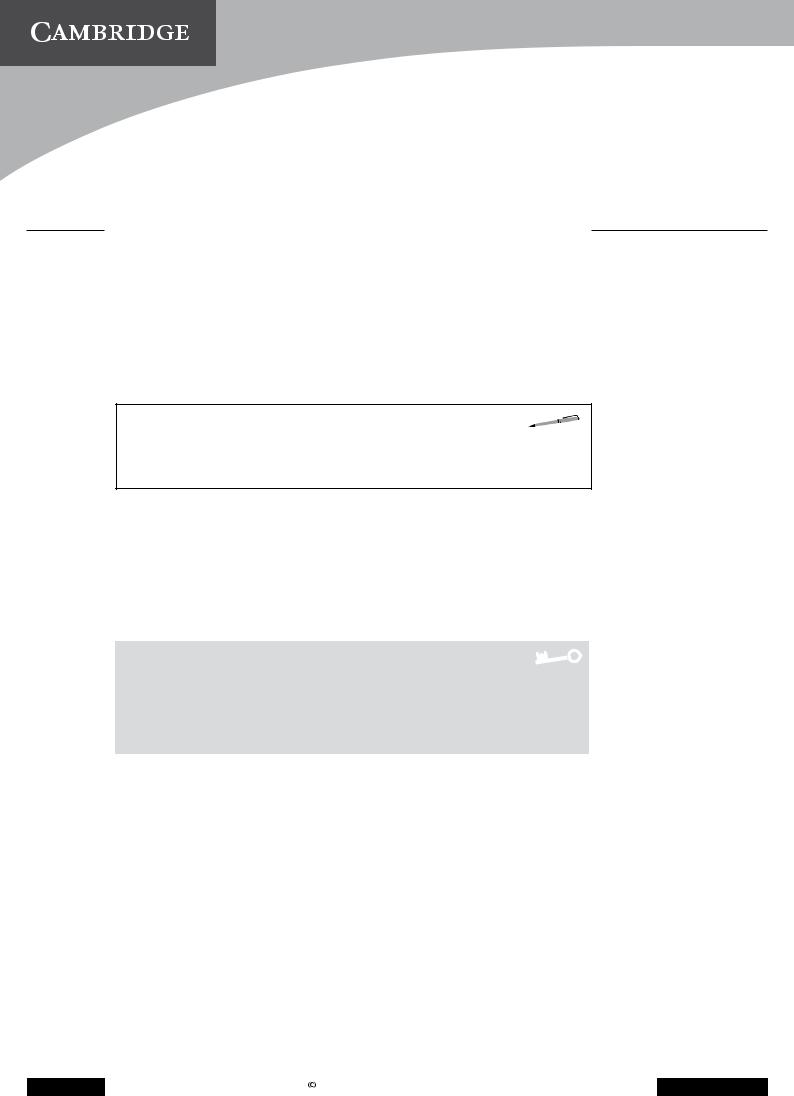
Professional English
Cambridge English for
Engineering
TEACHER’S NOTES
UNIT 8 Monitoring and control
•Describing automated systems
•Referring to measurable parameters
•Discussing readings and trends
•Giving approximate figures
 Go to page 103 for essential background information and useful web links.
Go to page 103 for essential background information and useful web links.
 Describing automated systems
Describing automated systems
Language note
You will find the following vocabulary useful in this section.
activate, control, detect, detector, measurement, pick up (detect), reading, regulate, sense (detect), sensor, set off (activate), trigger (activate)
Before you begin …
Ask students to explain what is meant by automated systems and to give some examples. You could focus on automatic systems in cars, for example gears, antilock braking system (ABS), air-conditioning (automatically maintains a selected temperature), headlights (triggered by light sensors), windscreen wipers (which detect raindrops) etc.
1 Students complete the task in pairs.
Answers
An automated system can function autonomously, without human control.
A manual system requires human control. A building management system is a centralised computer system that monitors and controls a wide range of functions in a large building, such as the lights, heating, air-conditioning, smoke detectors, fire alarms, lifts and security systems.
Before you begin …
The mechanical and electrical systems within large modern buildings are referred to within the construction industry as M&E (see the rubric for Exercise 2a).
Ask students to think about the types of system that this collective term refers to in buildings such as offices, hospitals, shopping malls and schools/colleges/ universities. Note that M&E does not normally include waste pipes and drains.
Mechanical systems include: air-conditioning
domestic cold water pipes (supply to taps/faucets) domestic hot water pipes (supply to taps/faucets) sprinkler systems (triggered in the event of a fire) natural gas pipes (to boilers / water heaters) medical gases (in hospitals)
oil pipes (to burners for heating) automatic doors,
lifts/elevators
pumps (in basement drainage systems)
94 |
Cambridge English for Engineering |
Cambridge University Press 2008 |
Photocopiable |
|
www.cambridge.org/elt/englishforengineering |
||||
|
|
|||

UNIT 8 Monitoring and control Teacher’s Notes
Electrical systems include: power sockets
lights
electric convector heaters
fire detection and alarm systems intruder detection and alarm systems telephone and data cables
2 a  8.1 Students listen and answer the questions.
8.1 Students listen and answer the questions.
Answers
1It’s a very green/environmentally orientated company.
2Energy saving will be an important consideration in the design.
3Sensors that detect the presence of people
4He wants to present two different design options to the client. He describes option one as a building with maximum automation.
b
c
8.2 Ask students what is meant by sensors and controls. Students listen to the recording and tick the points mentioned.
Answers
1 3 2 3 3 7 4 3
Students match the words and synonyms.
Answers |
|
|
|
2 |
reading |
4 |
detect; pick up |
3 |
regulate |
5 |
set off; trigger |
Pronunciation focus
Ask students to underline the stressed syllable in the following words and practise saying the words.
activate, control, detect, detector, measurement, regulate, sensor, trigger
d  8.2 Students complete the extracts and then could listen again to check their answers.
8.2 Students complete the extracts and then could listen again to check their answers.
Answers |
|
|
|
2 |
control |
5 |
detects; triggers |
3 |
senses |
6 |
set off |
4 |
reading |
7 |
regulate |
|
|
|
|
e Students complete the task in pairs. Suggested answers
1Presence detectors pick up movement and can activate light switches.
2Smoke detectors sense smoke and trigger fire alarms.
3Thermostats can regulate room temperature by controlling electric convector heaters.
4Pressure plates can detect the weight of a person and set off intruder alarms.
95 |
Cambridge English for Engineering |
Cambridge University Press 2008 |
Photocopiable |
|
www.cambridge.org/elt/englishforengineering |
||||
|
|
|||
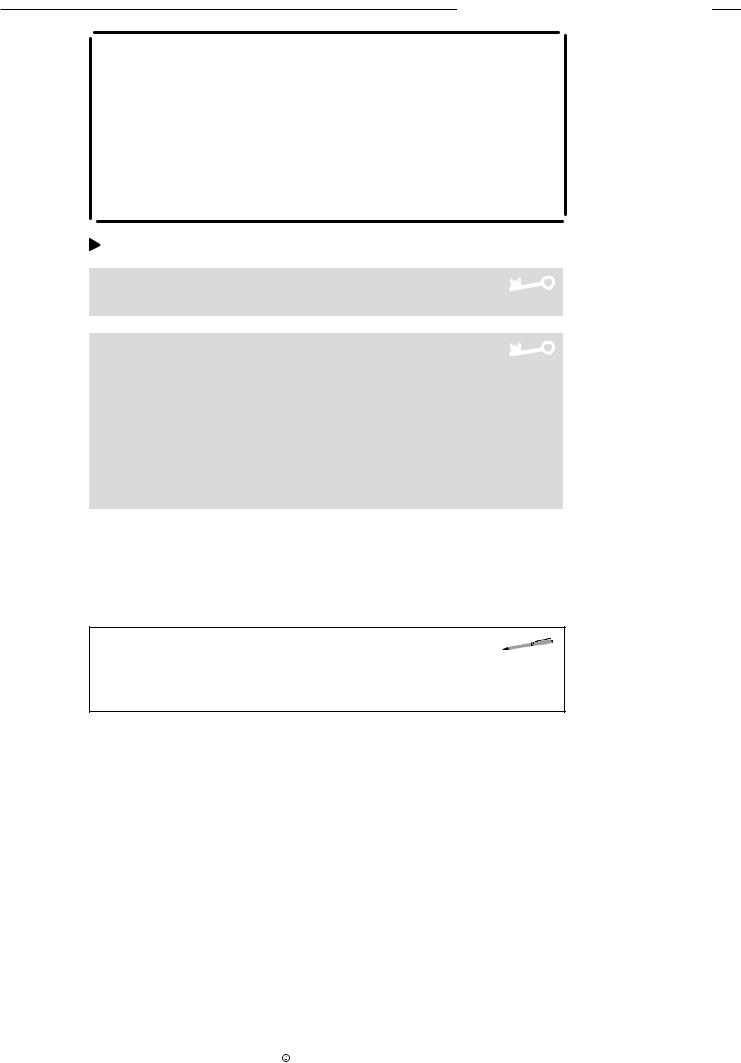
UNIT 8 Monitoring and control Teacher’s Notes
Extension activity: reading (Resource sheet 8a)
Give students Resource sheet 8a for further practice of the target vocabulary.
|
Answers |
|
|
|
|
|
|
a |
|
|
|
|
|
|
1 |
regulated |
4 |
sensing |
7 |
controlled |
|
2 |
sensors |
5 |
detected |
8 |
setting off |
|
3 |
detectors |
6 |
triggered |
9 |
picked up |
|
b |
|
|
|
|
|
|
1 |
The vault. |
2 |
The gents' toilets |
3 |
Presence detectors, alarms |
3 a |
8.3 Students listen and answer the questions. |
|
|
|||
Answers
See audioscript 8.3 on page 92
Answers
1That the green attitude is shared by all the staff, so they would take
care to switch off lights, etc. and so there is no need to control everything automatically
2Instead of automating everything, they would have old-fashioned manual controls.
3The advantage of operating the lights, etc. manually is that there’s no need to supply all the automated controls with electricity. The money saved by not having to buy all the hi-tech gadgets could be spent on planting trees, for example.
b c
Students complete the task in pairs.
Students complete the task in pairs.
 Referring to measurable parameters
Referring to measurable parameters
Language note
You will find the following vocabulary useful in this section.
consumption, cumulative, cycle, differential, flow, frequency, input, output, level, optimum, pressure, rate, temperature, timescale
Before you begin …
Ask students to explain what is meant by measurable (= can be measured). Ask students to give some examples of things that are often measured in engineering and technology. You could look at the meaning of the following units of measurement.
˚C (degrees Celsius) = temperature Pa (Pascals) = pressure
m3 (cubic metres) = volume
m/s (metres per second) = speed/velocity l (litres) = liquid capacity
l/s (litres per second) = flow/consumption W (watts) = power
amp (amperes) = current
v (volts) = voltage / electromotive force
|
Cambridge English for Engineering |
Cambridge University Press 2008 |
|
|
96 |
Photocopiable |
|||
www.cambridge.org/elt/englishforengineering |
||||
|
|
|||

UNIT 8 Monitoring and control Teacher’s Notes
4 Students complete the task in pairs.
Suggested answers
A thermostat measures and controls the water temperature in a boiler,
and there is also sometimes a pressure sensor for safety. A thermostat measures and controls room temperature in a heating system. A refrigerator also has a thermostat to monitor and control the temperature and a light that is activated by the door opening. Washing machines have thermostats to control the temperature of the water inside the machine. The time of the wash cycle is also controlled. The action of the drum is linked to a safety device that prevents the door from being opened while the drum is spinning.
5 a Students match the sensor or measuring system and the applications.
Answers
1 e 2 b 3 a 4 d 5 c
b Students complete the task in pairs.
Answers
1pressure measurement, for example monitoring the pressure of air inside a compressed air hose
2temperature measurement, for example measuring the temperature of water in a boiler
3flow, for example monitoring the amount of fuel flowing along a fuel pipe in an engine
4level measurement, for example monitoring the level of fuel in a fuel tank
5process recorders, for example monitoring the rejected (broken) items in a production process
6 a |
8.4 Students listen and answer the questions. |
Answers
aA blockage in a pipe causing a build-up of pressure
bA safety valve and a warning system triggered by a pressure differential
cA system for monitoring gas consumption
dCumulative consumption, the rate of consumption at different points in time, and the frequency of peaks in consumption
eA timescale
fAn exothermic reaction
gThe temperature of gas at the input point, and at the output point
hThe optimum input temperature for the gas
b Students match the words and definitions.
Answers
2 g 3 a 4 i 5 c 6 d 7 f 8 j 9 b 10 e
97 |
Cambridge English for Engineering |
Cambridge University Press 2008 |
Photocopiable |
|
www.cambridge.org/elt/englishforengineering |
||||
|
|
|||

UNIT 8 Monitoring and control Teacher’s Notes
c Students complete the extract.
You may need to explain downstream (= further down the direction of flow, for example in a river). It is used in engineering to describe industrial processes and the flow of liquid/air in pipe/duct networks – opposite = upstream.
Answers |
|
|
|
2 |
consumption |
7 |
frequency |
3 |
cumulative |
8 |
input |
4 |
rate |
9 |
output |
5 |
timescale |
10 |
optimum |
6 |
cycle |
|
|
|
|
|
|
Extension activity: more vocabulary
You could look at the meaning of some of the terms in Audioscript 8.4 in more detail.
build-up = progressive increase, often describes pressure
vessel = closed tank which can hold a pressure greater than the atmospheric pressure outside it
safety valve = valve which opens and releases pressure if the pressure inside a vessel exceeds a safe level – designed to prevent an explosion
meter = measuring device plot = draw a line on a graph
exothermic reaction = chemical reaction which produces heat endothermic reaction = chemical reaction which absorbs heat
7 a Students complete the task in pairs.
Suggested answers
We need a meter/sensor to measure: the rate of flow of water at the input point; the water temperature at the input point; the rate of flow of gas at the
input point; the temperature of the gas burner; the water temperature inside the vessel; the level of water inside the vessel; the steam pressure inside the vessel; the steam temperature inside the vessel; the steam temperature at the output point; the steam pressure at the output point; and rate of flow of steam at the output point.
b Students complete the task in pairs.
Suggested answers
The cumulative consumption of water and gas; the cumulative output of
steam; the peak rates of consumption for water and gas; peak steam output; the frequency of gas use / firing of the burner; the differential between water input temperature and water temperature inside the vessel; the differential between steam pressure inside the vessel and in the output pipe; the differential between steam temperature inside the vessel and in the output pipe
98 |
Cambridge English for Engineering |
Cambridge University Press 2008 |
Photocopiable |
|
www.cambridge.org/elt/englishforengineering |
||||
|
|
|||
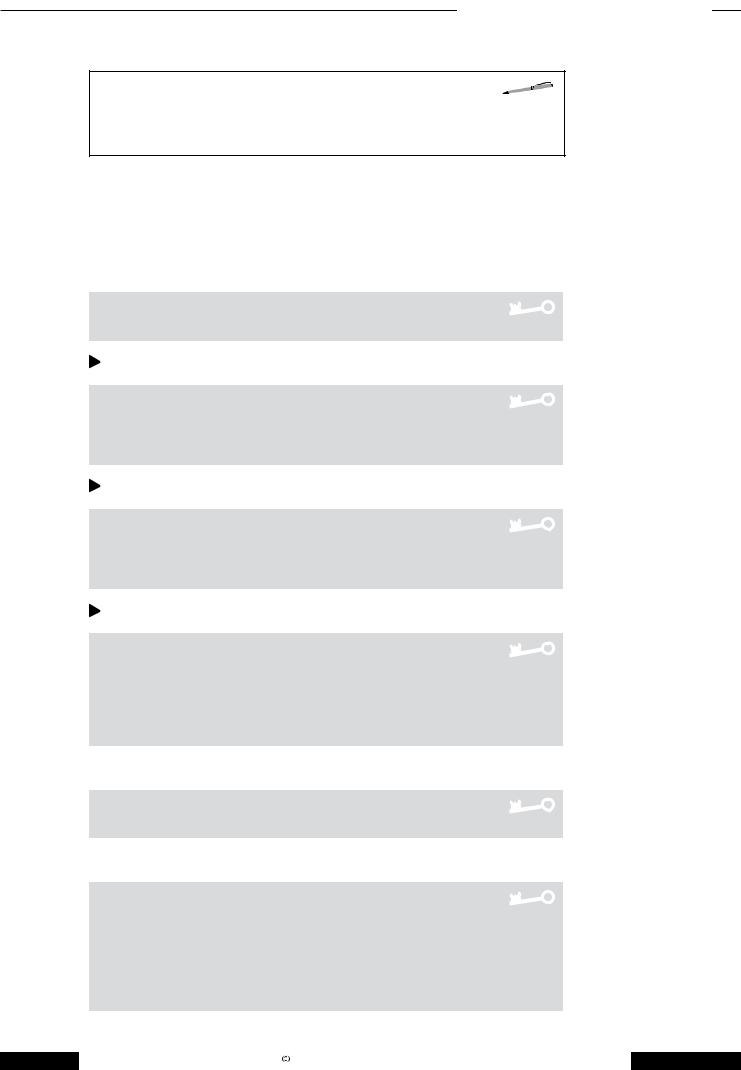
UNIT 8 Monitoring and control Teacher’s Notes
 Discussing readings and trends
Discussing readings and trends
Language note
You will find the following vocabulary useful in this section.
band (of fluctuation), blip, continual, continuous, decrease, fall, fluctuation, increase, peak, range, rise, trough
Before you begin …
Ask students to explain what is meant by reading, for example a temperature reading on a thermometer, a pressure reading on a pressure gauge and trend (= a pattern). Explain that in order to explore readings and trends, you are going to look at electricity consumption and generation.
8 a Students complete the task in pairs.
Answers
See audioscript 8.5 on pages 92 and 93
b 8.5 Students listen and make notes.
Answers |
|
|
|
1 |
temperature |
4 |
mealtimes |
2 |
light levels |
5 |
commercial breaks on TV |
3 |
day of the week |
|
|
c 8.5 Students complete the extracts and listen again to check their answers.
Answers |
|
|
|
1 |
increase |
4 |
rises |
2 |
increases; decreases |
5 |
falls |
3 |
rise |
6 |
rise; fall |
d 8.6 Students listen and answer the questions.
Answers
1Because maximum capacity is equivalent to peak demand, there is significant spare capacity during off-peak periods.
2Being able to generate power during off-peak periods and store it for peak periods
3Because electrical charge is extremely difficult to store in large amounts
e Students match the words and definitions.
Answers
2 g 3 d 4 a 5 b 6 h 7 f 8 e
f Students complete the task.
Suggested answers
There is a band of fluctuation between approximately 2,700 and 5,000 Megawatts. Peak demand occurs each day at about 8.00 pm, when there is a very brief blip. The graph shows a trough each night, when demand falls significantly. At the weekend, the range of fluctuation is smaller than it is during the week. Fluctuations in demand are continual – there are no points where demand remains at the same level continuously for a long period of time.
99 |
Cambridge English for Engineering |
Cambridge University Press 2008 |
Photocopiable |
|
www.cambridge.org/elt/englishforengineering |
||||
|
|
|||

UNIT 8 Monitoring and control Teacher’s Notes
9 a Students complete the extract.
Answers |
|
|
|
2 |
peak demand |
5 |
fluctuations |
3 |
continual |
6 |
range |
4 |
blips |
|
|
|
|
|
|
b Students read the extract and answer the questions.
Answers
1Operating on a start-run-stop-wait basis
2Momentary blips in demand
3Frequency of the AC (alternating current) supply
4A slight drop in frequency indicates that power stations are working at full capacity.
5Start-up of appliances is delayed slightly by holding the appliance on standby.
10 a Students complete the task in pairs.
Answers
1Demand for electricity fluctuates, and power stations need to be able
to cope with peak demand (at the top of the range of fluctuation). The problem is that the peak only lasts for a very brief period each day, meaning that power stations have a lot of generating capacity which, most of the time, is not used. Therefore, electric companies try to smooth demand – using spare capacity during demand troughs (at night) to store up energy, which is then used the next day when demand peaks.
b 8.7 Students listen and make notes. c Students complete the task in pairs.
Extension activity: power stations (Resource sheet 8b)
Give students Resource sheet 8b. Students complete the extract.
Answers |
|
|
|
|
|
2 |
nuclear |
7 |
pressure |
12 |
reservoir |
3 |
steam |
8 |
rotary |
13 |
dam |
4 |
water |
9 |
generators |
14 |
gravity |
5 |
reactor |
10 |
current |
15 |
hydrostatic |
6 |
rotors |
11 |
lake |
|
|
|
Cambridge English for Engineering |
Cambridge University Press 2008 |
|
|
100 |
Photocopiable |
|||
www.cambridge.org/elt/englishforengineering |
||||
|
|
|||
